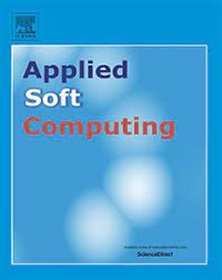A heuristic-based multi-stage machine learning-based model to design a sustainable, resilient, and agile reverse corn supply chain by considering third-party recycling
IF 7.2
1区 计算机科学
Q1 COMPUTER SCIENCE, ARTIFICIAL INTELLIGENCE
引用次数: 0
Abstract
This study addresses the reverse supply chain configuration problem for the agri-food sector with agility, resilience, and sustainability aspects. To do this, this article proposes a heuristic-based multi-stage machine learning-based model to design a corn reverse logistics based on agility, resilience, and sustainability features. In this way, at the first stage, the performance of the potential recycling partners is evaluated by combining the Categorical Boosting Algorithm (CatBoost) method. In the next stage, a multi-objective model is suggested to configure the corn reverse logistics in which the resilience, agility, and sustainability dimensions are incorporated. Afterwards, we deal with uncertainty by developing a data-driven method based on the chance-constrained fuzzy programming method and the seasonal autoregressive integrated moving average approach. Finally, by choosing a real-world case study, the suggested model is solved by developing a heuristic-based solution procedure. The obtained results showed that the developed heuristic-based solution approach able to find optimal and near-optimal solution in a reasonable time. Based on the achieved outputs, increasing the capacity parameter has a positive impact in the efficiency of the supply chain. Also, results show that when the amount of the initial waste increases, the total profit and environmental impacts of the supply chain have increased, too. Also, the achieved outputs confirm the robustness and efficiency of the developed machine learning-based approach. Then, several sensitivity analyses are presented to examine the role of the key parameters in the research problem. Finally, the managerial insights are provided.
求助全文
约1分钟内获得全文
求助全文
来源期刊

Applied Soft Computing
工程技术-计算机:跨学科应用
CiteScore
15.80
自引率
6.90%
发文量
874
审稿时长
10.9 months
期刊介绍:
Applied Soft Computing is an international journal promoting an integrated view of soft computing to solve real life problems.The focus is to publish the highest quality research in application and convergence of the areas of Fuzzy Logic, Neural Networks, Evolutionary Computing, Rough Sets and other similar techniques to address real world complexities.
Applied Soft Computing is a rolling publication: articles are published as soon as the editor-in-chief has accepted them. Therefore, the web site will continuously be updated with new articles and the publication time will be short.
 求助内容:
求助内容: 应助结果提醒方式:
应助结果提醒方式:


